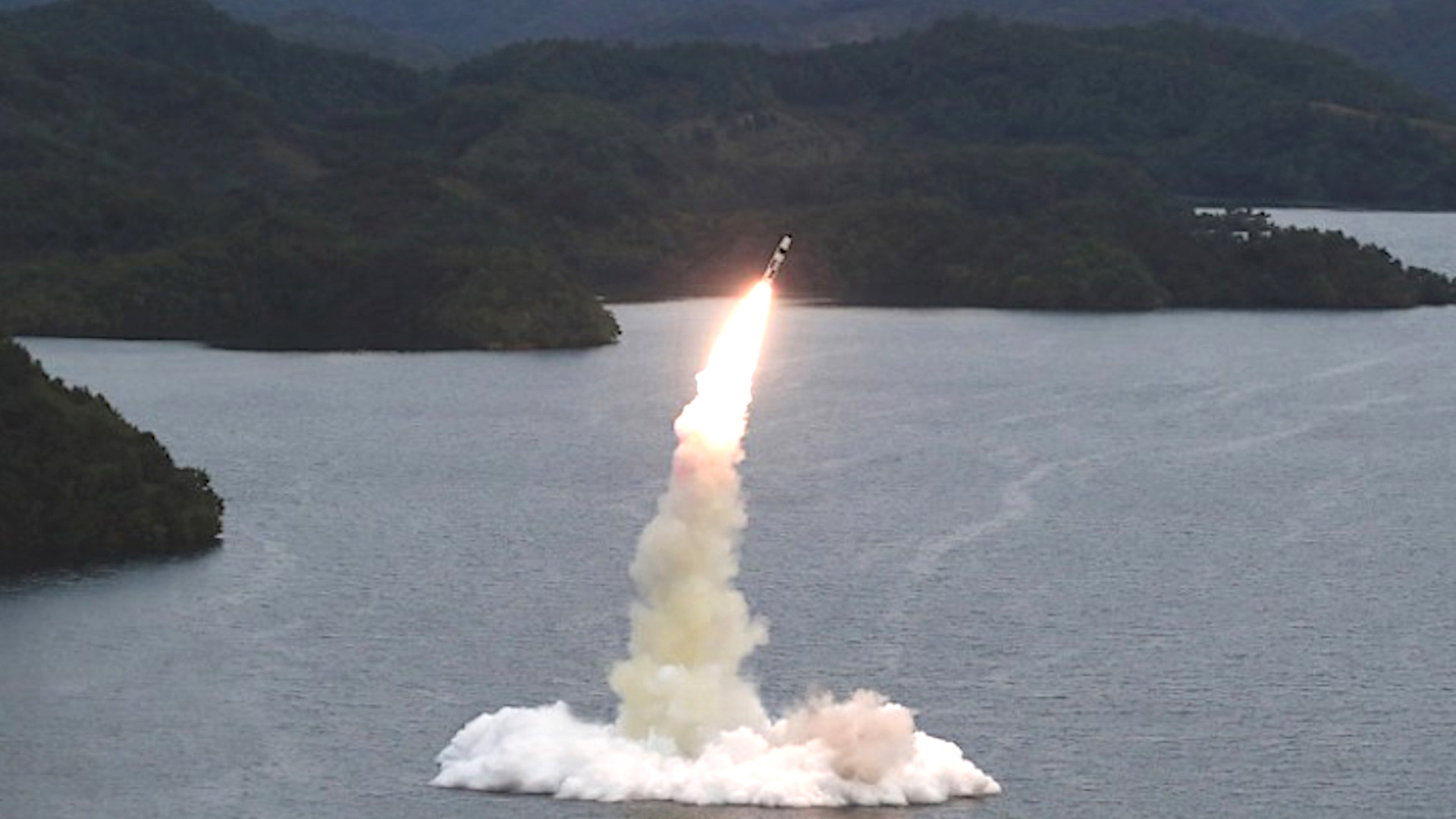North Korea’s latest weapon system puts a new spin on the age-old concept of camouflage.
In its latest parade through Pyongyang’s Kim Il-Sung Square marking the 75th Anniversary of North Korea’s founding, the Worker-Peasant Red Guards paramilitary force unveiled a fleet of multiple rocket launchers disguised as civilian trucks. The box trucks and dump trucks had 12 tubes each of what appeared to be 122mm artillery rockets deployed via their pop-up and slide door roofs. The dump truck crews even sported yellow hardhats with their rifles.

The parade heavily featured the paramilitary force, with a fleet of tractors pulling rocket-launchers and anti-tank guided missiles on trailers. North Korea displayed similar systems towing guided missile launchers in the same parade two years ago. The tractors are a clear representation of a very real North Korean operational tactic — using these civilian instruments for all-out war should a conflict kick off. This heavy weaponry also underlines how North Korea’s “civil defense” possesses significant firepower.



The trucks also are indicative of a growing rebirth of old deception tactics to further conceal military equipment on the battlefield. The U.S. is viewing similar tactics as critical to a fight in the Pacific. But, above all useless, Russia’s invasion of Ukraine has clearly demonstrated the the changing nature of how and what constitutes an intelligence, surveillance, target acquisition, and reconnaissance (ISTAR) asset and how those assets detect enemy units and directing fires on them. ISTAR capabilities have largely been democratized via the proliferation of relatively cheap unmanned systems.
Beyond just intelligence gathering, first-person view and other kamikaze drones and drone-dropped bomblets have drastically increased the risk to forces even behind the front lines. Air-to-ground precision guided weapons, once limited to only wealthier powers, especially in large numbers, can now be had for the cost of a hobby drone and some creativity. And a single drone can be both the hunter and the killer.
In terms of North Korea, they are up against a far more expansive surveillance capability. The U.S. and South Korea are constantly monitoring activity and posture across the DMZ, down to patterns of movement of fighting vehicles and artillery and their locations. You can read about how a part of this is done from the air here. During war, this surveillance would be ratcheted-up to a level never seen before in modern warfare. So playing on the U.S. and South Korea’s weaknesses — the lack of being able distinguish civilian from military vehicles that appear the same — is clearly the goal here. As is vastly increasing the targeting sets that would need to be addressed during a conflict. If any truck can be an artillery rocket launcher, the numbers of targets that need to be struck grows rapidly, and it’s already a gigantic list in that theater.
Whether in Ukraine or South Korea, if it is near the front and can be seen and identified, it can be killed. This puts immense pressure to keep equipment out of sight as much as possible, or at least confuse the enemy as to what they are seeing. As part of its strategy for defending against a potential Chinese invasion, Taiwan has previously concealed its armored vehicles as construction equipment during exercises.
In some applications, though, the solution may be hiding in plain sight. The U.S., Israel, and Russia have all developed missile launchers disguised to look like shipping containers, able to blend in among deck cargo or within industrial areas from which to launch attacks. The U.S. Air Force’s stealthy XQ-58A Valkyrie drones also have the potential to be deployed via a containerized system.


This is far from North Korea’s first foray into extreme methods of concealment to enhance survivability. Deterrence constitutes a significant portion of the nuclear-armed state’s strategy, designed to make it difficult if not impossible for any preemptive strike to take out all of North Korea’s nuclear warheads and delivery systems.
We wrote two years ago about Pyongyang testing short-range ballistic missiles fired from aboard modified railcars, as well as last year’s test launch from within a lake.

Disguised launchers create a deadly shell game for any opponent. Which trucks, train cars, or lakes have launchers in them? Missing even one can have costly results. From the North Korean perspective, this ties-up additional ISTAR resources from the enemy that would otherwise be used elsewhere.
For that matter, if North Korea has invested in this technology for its paramilitary force’s rocket launchers, what’s to stop them from similarly adopting it for long-range fires like nuclear-armed cruise missiles? It will be interesting to see how North Korea and other nations develop similar these systems in the coming years as concealment and guile become more necessary than ever to fight and win on the modern, ultra-surveilled battlefield.
Contact the author: stetson.payne@thewarzone.com
